| The Early Inter-War Years |
|
Production of civilian vehicles restarted
in 1919, during a difficult time for the industry. At the end of
the war all military contracts had been cancelled, and the Army
Disposal Board sold large numbers of ex-military vehicles at
extremely low prices. They flooded the market, and made it
almost impossible to sell new products. Many vehicle
manufacturers, including Guy Motors found it difficult to
survive.
The company continued to be innovative,
launching the Guy 8-cylinder car, powered by the first British
V8 engine, with inclined valves, and inclined, detachable
cylinder heads. Around 150 Guy cars were produced between 1919
and 1925, when production ended. |

A Guy car and lorry outside the factory.
| Production of the 30 cwt. chassis continued in a range of
models including the Guy Charabanc, a 14-seater with a
4-cylinder engine, 4-speed plus reverse gearbox, cone clutch,
double reduction rear axle, and pressed steel frame. It was also
fitted with carbide lamps. |

A Guy Charabanc built in 1919, seen at the
top of Lynmouth Hill.

An early pay as you enter bus on a Guy 30
cwt. chassis from 1920.
|
In 1920 experiments were carried out with
the Holden pneumatic suspension system, in an attempt to improve
passenger comfort. The idea was abandoned with the introduction
of Dunlop and Goodyear pneumatic truck tyres.
In 1921 Guy produced a 30-seater bus, based on the
successful 30 cwt. chassis, with the governor removed. The
vehicle became very successful, and large numbers were produced.
|
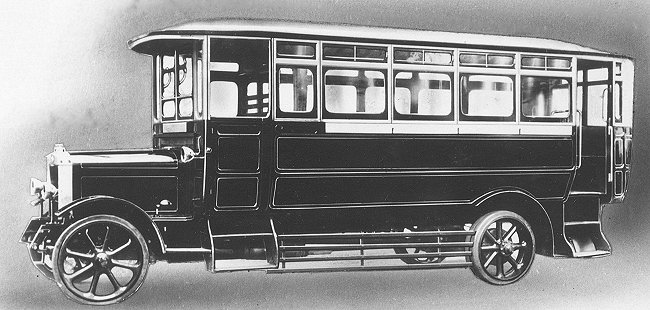
A Guy 30-seater bus.
| 1922 saw the development of the Guy Promenade Runabout,
based on a special version of the ‘J’ chassis. It had small
wheels and a low floor to provide easy access for passengers.
The vehicle, first supplied to Bournemouth, was also used at
many other seaside resorts including Portsmouth. |
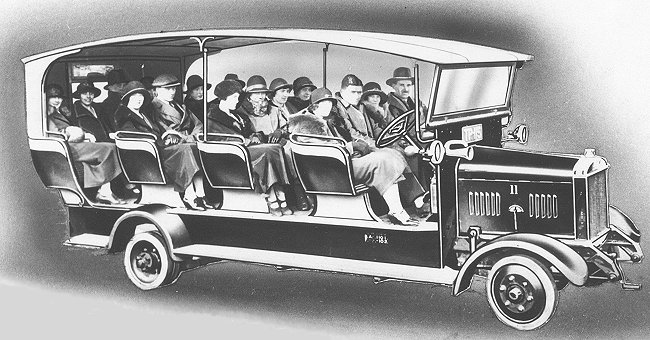
The Guy Promenade Runabout.

Another view of the Guy Promenade Runabout.
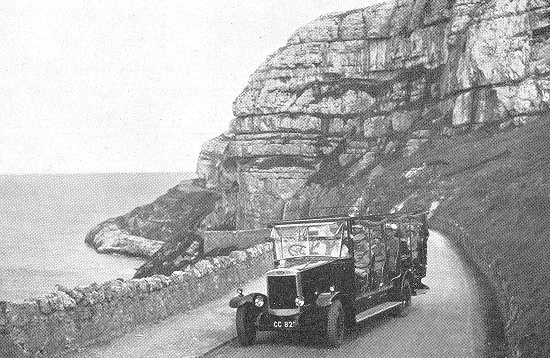
Another view of a Guy Promenade Runabout.
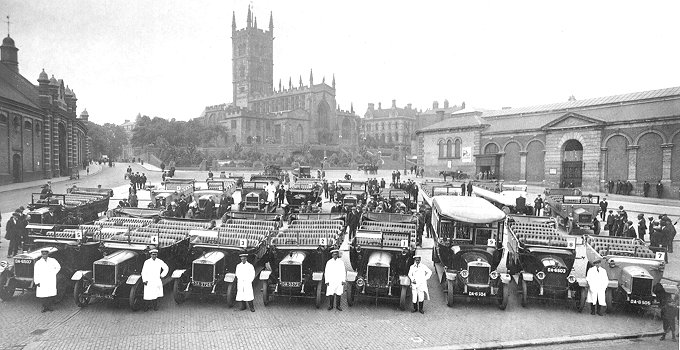
A fleet of Guy coaches in Wolverhampton Market place in the early 1920s,
belonging to Tours & Transport, King Street. |
| Guy began to build military vehicles in 1923 under a government subsidy.
The first vehicles were 30 cwt. and 2½ ton
trucks with pneumatic tyres. |
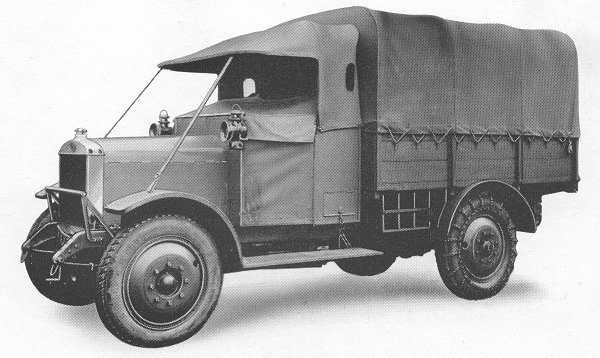
A Guy military truck.
| The Guy slogan "Feathers In Our Cap" became well known
thanks to the Red Indian mascot that was fitted to almost every
vehicle. It all started with an advert on January 22nd, 1924
which pointed out some of the many repeat orders received at the
works. The feathers in the advert reminded people of a Red Indian
head dress, and so the mascot eventually appeared. The slogan was always, and will always be associated with Guy
Motors. |
|
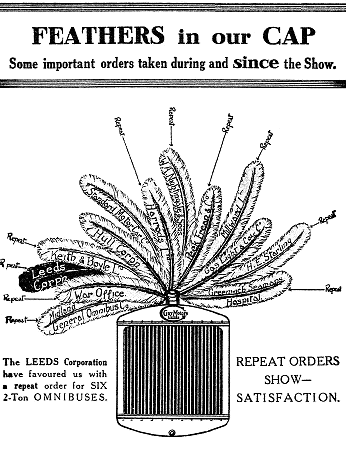
The original advert. |
|
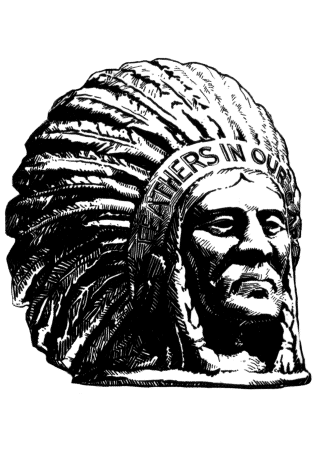
The Guy mascot. |

The Guy low-loading dropped-frame chassis,
developed in 1924, greatly changed bus design. It improved
passenger accessibility, lowered the centre of gravity, and made
the vehicle easier to handle. |
|
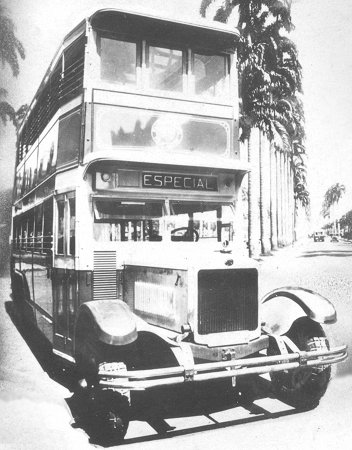
One of the Guy six-wheelers in Rio de
Janeiro. |
In 1924 Guy produced the UK's first dropped-frame
chassis, designed for use with passenger vehicles.
At the time, other manufacturers simply adapted goods
vehicle chassis for passenger work.
The dropped-frame chassis enabled passengers to enter the
bus via a single step, and became extremely popular. Soon after the chassis was introduced, Guy received an
order for 170 buses from an operator in Rio de Janeiro.
The chassis was available in 3 models: The 'BA' with a
13 ft. 4 inch wheelbase, suitable for a 20 passenger body.
The 'B' with a 15 ft. 3 inch wheelbase, suitable for a 20
to 25 passenger body.
The 'BB' with a 16 ft. 5 inch wheelbase, suitable for a
30 passenger body. |
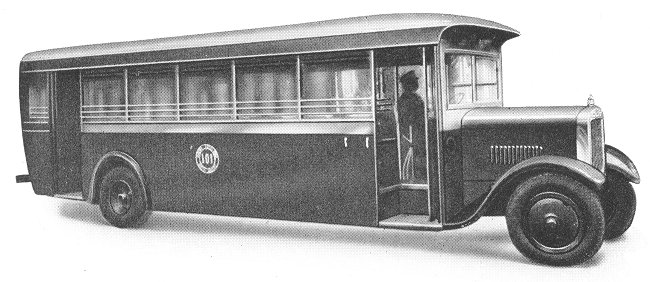
One of the buses built for use in Rio de Janeiro.
 |
|
 |
|
 |
Return to
The Early Years |
|
Return
to the
beginning |
|
Proceed to
The Late 1920s |
|